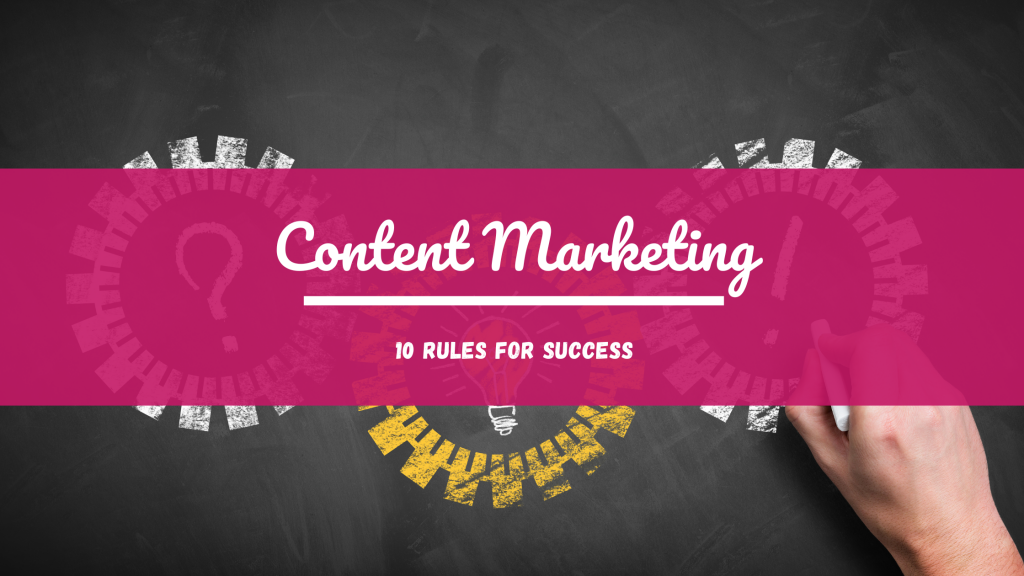
#7 Be Consistent
To truly be successful with marketing your content, you need to strictly adhere to the seventh rule – to be consistent! One of the worst things you can do to a loyal audience is to come and go in and out of their life to the point where they can’t rely on you as a niche leader.
Consistency is important in all aspects of your business where you are educating and informing your audience. That includes publishing consistently on your blog, sending out emails on a regular basis, periodically launching products, and being active on the social media platforms where your brand is visible.
Many digital marketers get started feeling energetic and competent about the content they have to share with their niche audience. Then, they run out of ideas or they get distracted by other projects or life events and they disappear suddenly.
You don’t have to adhere to a daily schedule of content publishing if that becomes too much for you. But what you don’t want to do is go from publishing on a regular basis to suddenly not showing up for weeks or months at a time.
If something happens, such as a health event that is going to limit your productivity for a period of time, make sure you publish on all of your platforms to let your audience know a little about what is going on, and a note about the fact that you will be gone for a short amount of time.
If possible, even if you are not able to churn out content on the same schedule you once were, at least keep publishing consistently on your blog and social platforms, as well as sending emails out to your subscribers.
This is especially important for your blog and your email autoresponder. Google and other search engines frequently crawl your blog to see how often you are publishing new content.
If you have worked hard to secure a good ranking for certain keywords in your niche, you don’t want to allow your blog to grow stagnant because the search bots will begin ranking your blog lower and lower as other content providers who are freshening up their blog frequently begin to rise to the top.
You also don’t want to allow your list of subscribers to grow cold. It already takes a lot to convince a person to hand over their personal contact information. If you have been emailing them daily or weekly and you suddenly disappear for months or years, only to pop up again later, they will have forgotten who you are and why you are invading their inbox.
Even if you have to purchase private label rights (PLR) products or hire a ghostwriter and virtual assistant to publish content on your behalf, it will be worth it so that you don’t lose your business momentum.
#8 Plan Ahead
The eighth rule is to plan out your live content so that you are not floundering in front of others and publishing an event that falls flat.
Many people assume that the audience will carry them through a live event with questions but the truth is, many times people clam up and refuse to draw attention to themselves, leaving you sitting there with nothing to provide for your live discussion.
Some digital marketers forget that live events are also a part of their content marketing. When you host a webinar or even a live stream on a video site or podcast, you need to be prepared with at least half an hour to an hour of discussion that you can carry on your own if you have to.
Sometimes, you can find a co-host to banter with during a live event, but not everyone is skilled at carrying a conversation, so you still want to be prepared on your own. You definitely need to refer back to earlier rules such as knowing the goal for your content.
When you are hosting a live event that you plan to publish later for people to access, you want to center everything around the goal you have for the attendees. This is usually to make a purchase, but it can also be an opportunity for you to simply showcase your expertise and transform their mindset.
Start by coming up with an interesting overall concept for your live event. Then drill down and have some primary talking points that you want to share about the main topic. You can work with a simple outline or have one that’s more in-depth.
Keep in mind that you don’t want to have to read from a lengthy sheet because you might lose your place and you don’t want to have to stall and find what you intended to talk about next when people are listening or watching live.
As part of your content, you can create a slide presentation using your outline to keep things on track and moving along. You can use a tool like Canva to do this for free, or create them using PowerPoint.
Keep in mind that certain people will pop into a webinar or live stream to see if what you’re saying is interesting. So don’t give all of the best points at the very beginning. Have them sprinkled throughout.
Be willing to discuss opposing viewpoints and keep things civil. After your webinar is finished, be sure to edit it using a tool like Camtasia so that you can edit out any breaks or mishaps.

